Need Help ID'ing a few Artillery Shells Civil War through...?
Picked these up recently over the course of the past few weeks at flea markets.
1. Shell on left is what I believe is an early Civil War era Armstrong Shell. It has 12 zinc plugs but I can't find any that match exactly.bIt has the original zinc/wood fuse. Stands 8" high, 3" wide and weighs 8lb 6oz.
2. Shell in middle I have No idea, its a solid shot, no markings. Weighs 76lbs, stands 20" high and 5.75" wide.
3. Shell on right, again no idea. Solid shot with fuse on bottom.Fuse is marked 10. Weighs 86lbs, stands 17" high (including fuse). Bottom marked IV. 97. 103.
Hoping someone can point me in the right direction. There doesn't seem to be too much information on shells post civil war out there.
Picked these up recently over the course of the past few weeks at flea markets.
1. Shell on left is what I believe is an early Civil War era Armstrong Shell. It has 12 zinc plugs but I can't find any that match exactly.bIt has the original zinc/wood fuse. Stands 8" high, 3" wide and weighs 8lb 6oz.
2. Shell in middle I have No idea, its a solid shot, no markings. Weighs 76lbs, stands 20" high and 5.75" wide.
3. Shell on right, again no idea. Solid shot with fuse on bottom.Fuse is marked 10. Weighs 86lbs, stands 17" high (including fuse). Bottom marked IV. 97. 103.
Hoping someone can point me in the right direction. There doesn't seem to be too much information on shells post civil war out there.
Amazon Forum Fav 👍
Attachments
-
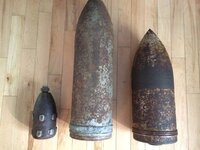 IMG_5739 (Small).JPG65.2 KB · Views: 3,360
IMG_5739 (Small).JPG65.2 KB · Views: 3,360 -
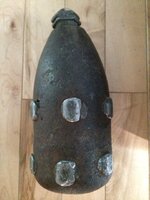 IMG_5740 (Small).JPG73.6 KB · Views: 763
IMG_5740 (Small).JPG73.6 KB · Views: 763 -
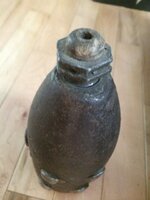 IMG_5741 (Small).JPG61.1 KB · Views: 237
IMG_5741 (Small).JPG61.1 KB · Views: 237 -
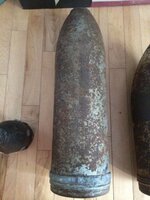 IMG_5742 (Small).JPG80.8 KB · Views: 428
IMG_5742 (Small).JPG80.8 KB · Views: 428 -
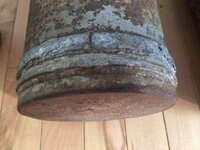 IMG_5743 (Small).JPG65.9 KB · Views: 237
IMG_5743 (Small).JPG65.9 KB · Views: 237 -
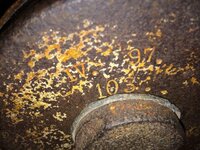 IMG_5747 (Small).JPG95 KB · Views: 185
IMG_5747 (Small).JPG95 KB · Views: 185 -
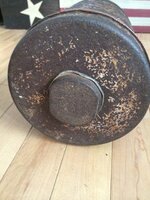 IMG_5746 (Small).JPG89.8 KB · Views: 203
IMG_5746 (Small).JPG89.8 KB · Views: 203 -
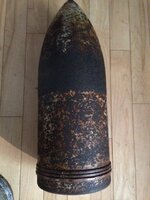 IMG_5745 (Small).JPG80.3 KB · Views: 200
IMG_5745 (Small).JPG80.3 KB · Views: 200 -
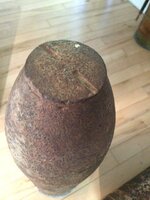 IMG_5744 (Small).JPG74.1 KB · Views: 260
IMG_5744 (Small).JPG74.1 KB · Views: 260




